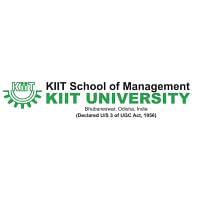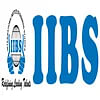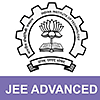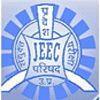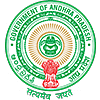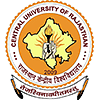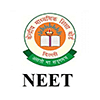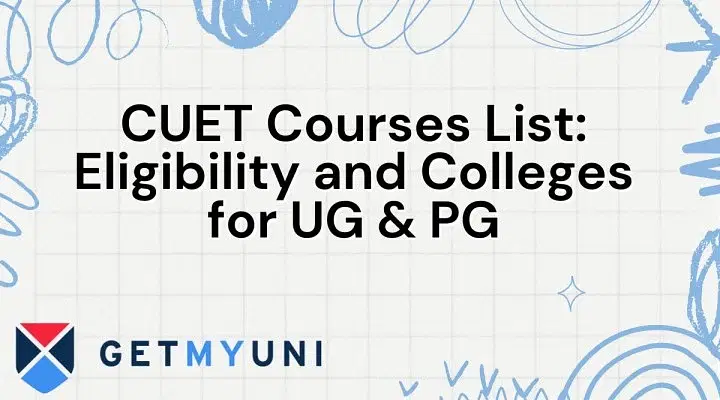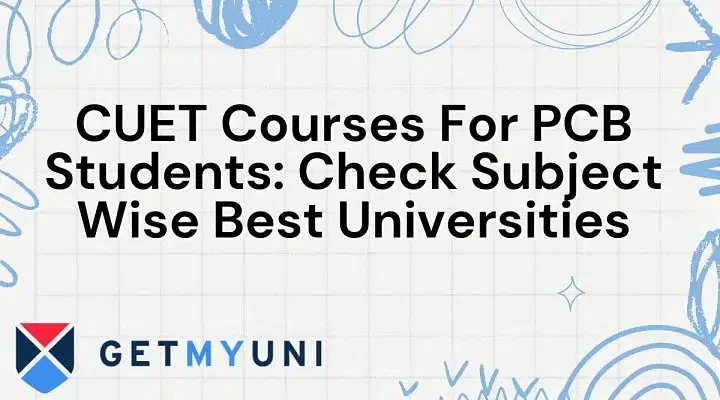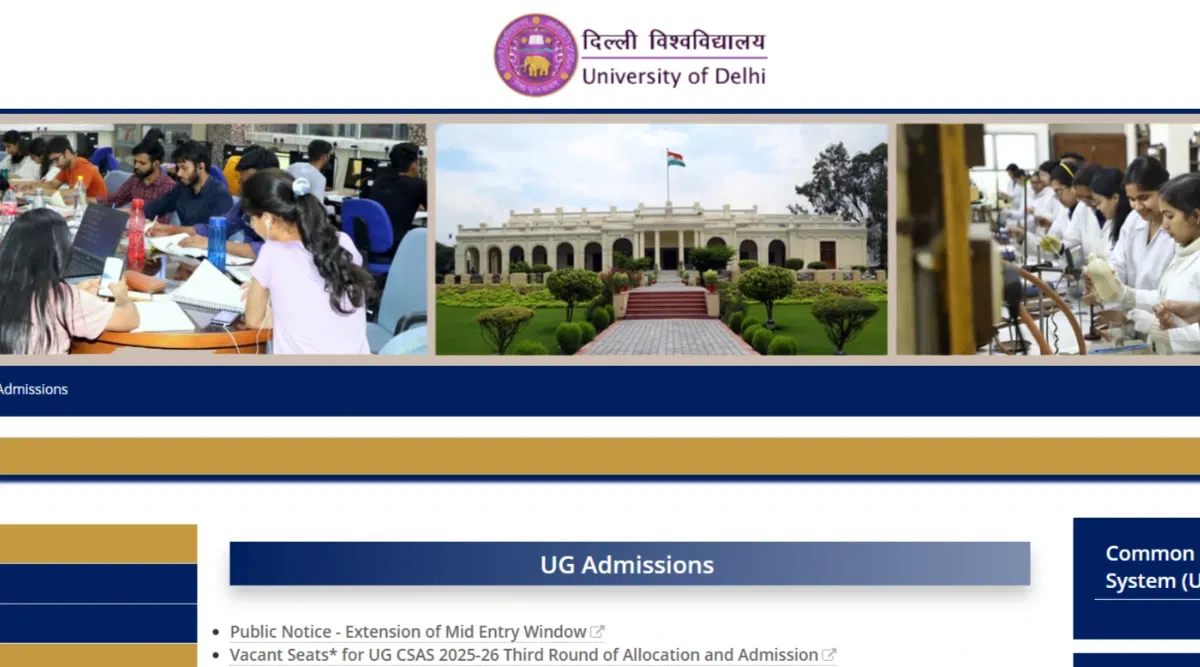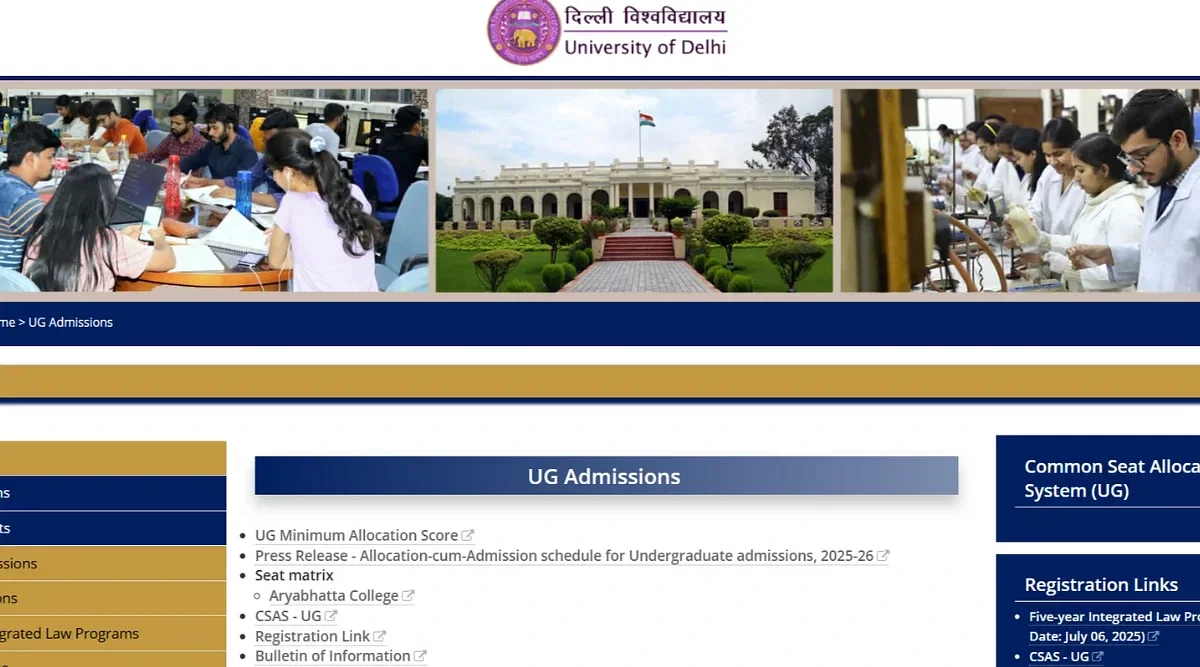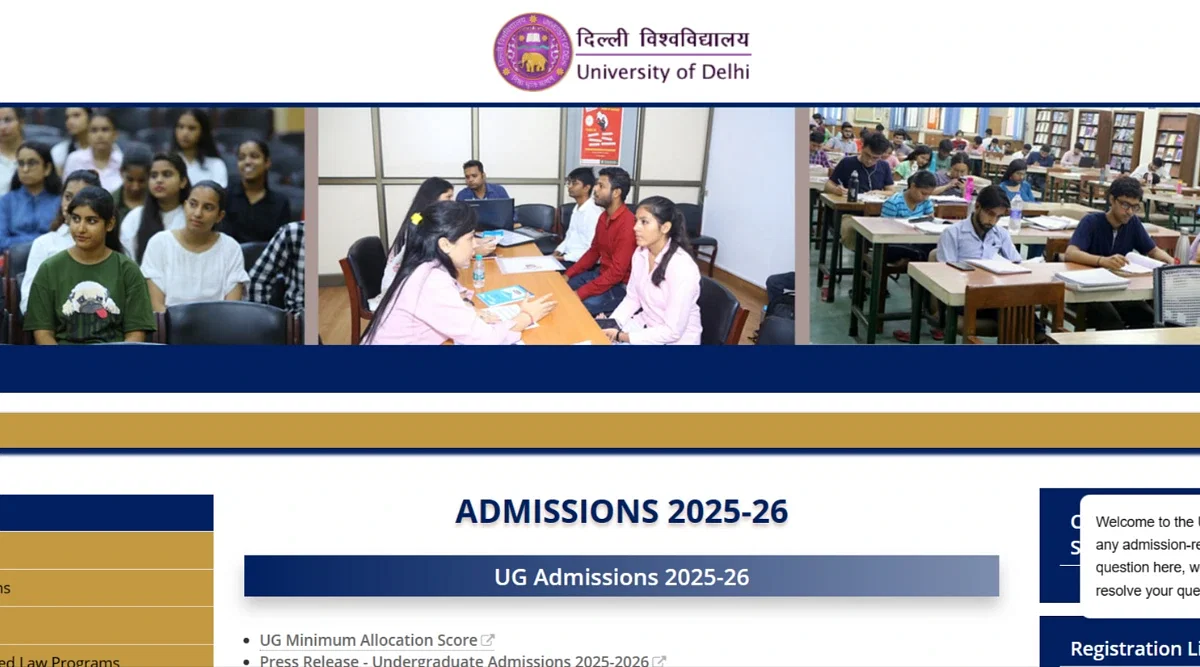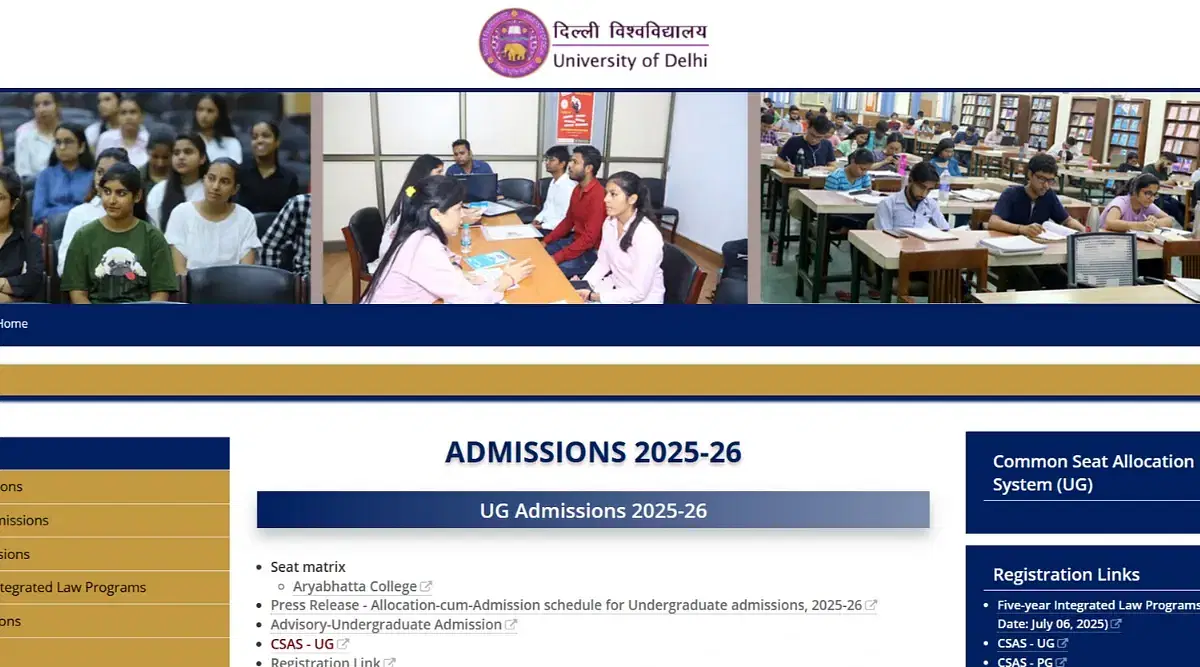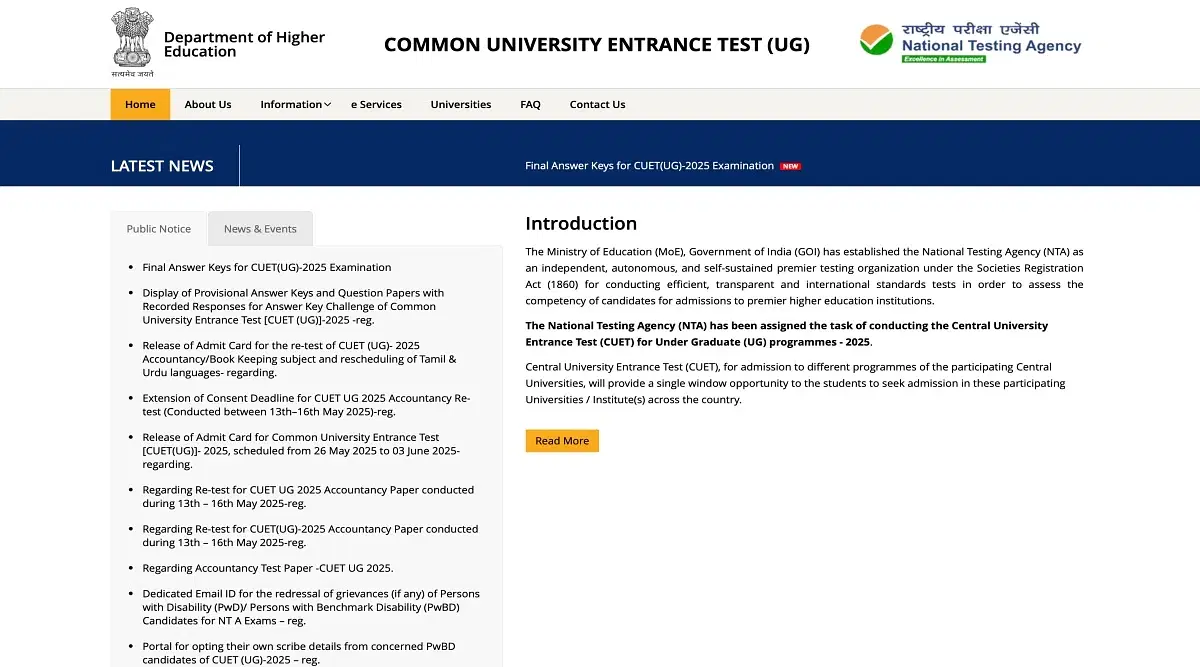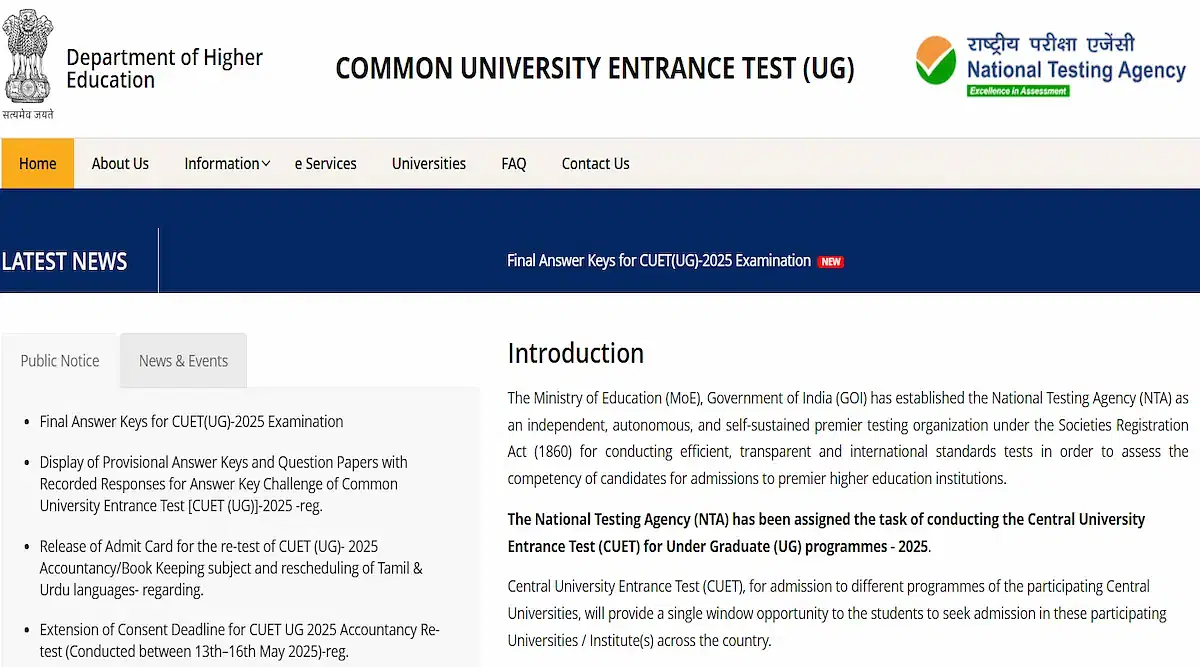
Table of Contents
CUCET UG Mathematics syllabus 2025 topics such as algebra, calculus, probability, 3-D geometry, time series, linear programming, and many more. Most of the CUET UG Maths syllabus 2025 is based on class XII topics. The section-wise CUET Maths syllabus 2025 is provided here, along with test pattern details and exam preparation tips.
Applicants are advised to download the CUCET UG Mathematics syllabus pdf from the link given and start preparing for their examination. The CUET Maths syllabus PDF will help the students prepare well for the exam and learn the topics in detail.
Furthermore, apart from syllabus students must refer to some highly recommended and relevant CUET UG study materials, previous year papers, books, sample paper, mock tests, etc for an effective preparation and better exam understanding.
CUET Maths Syllabus PDF Download Link
CUET UG maths syllabus 2025 pdf download link has been released by the authority on the official website and is mentioned in the table below for students reference. Applicants must download the CUET Mathematics syllabus shared.
| Particulars | Direct Link |
| CUET UG Maths Syllabus PDF Download Link | Download Here |
CUET Maths Syllabus
CUET Maths syllabus 2025 is categorised into three sections: Section A, Section B1, and Section B2. Each of these sections involve a variety of topics. The detailed section-wise syllabus of CUET Maths is given below.
Section A
Applicants must check the CUET UG section A syllabus detailed below. The section A consist of following topcis.
Algebra
The detailed syllabus of the CUCET UG Algebra paper is mentioned here.
- Matrices and types of Matrices
- Equality of Matrices, transpose of a Matrix, Symmetric, and Skew Symmetric Matrix
- Algebra of Matrices
- Determinants
- Inverse of a Matrix
- Solving simultaneous equations using Matrix Method
Calculus
Students must check the CUET UG Calculus paper syllabus topics mentioned below.
- Higher order derivatives
- Tangents and Normals
- Increasing and Decreasing Functions
- Maxima and Minima
Applications of Integrations
Students must check the CUCET 2025 syllabus topics of the Applications of Integrations paper mentioned below.
- Indefinite integrals of simple functions
- Evaluation of indefinite integrals
- Definite Integrals
- Application of Integration as an area under the curve
Differential Equations
The detailed syllabus of the Differential Equations paper is shared in the section below.
- Order and degree of differential equations
- Formulating and solving differential equations with variable separable
Distribution of Probabilities
Applicants must check the CUET UG Distribution of Probabilities paper mentioned as pointers below.
- Random variables and their probability distribution
- Expected value of a random variable
- Variance and Standard Deviation of a random variable
Linear Programming
The detailed syllabus topics of the Linear Programming paper has been mentioned below for students reference.
- Mathematical formulation of Linear Programming Problem
- Graphical method of solution for problems in two variables
- Feasible and infeasible regions
- Optimal feasible solution
Section B1: Mathematics
Students must note that the CUET UG Maths exam syllabus 2025 Section B1 consist of Mathematics papers, namely, Algebra, Calculus, Probability, Relationships and Functions, Linear Programming, and many more.
Relationships and Functions
The Relationships and Functions detailed syllabus topic has been mentioned here for students reference.
- Relations and functions: Included is a one-to-one mapping, composite functions, reflexive, transitive, symmetric, and equivalence relations, as well as binary operations.
- Functions of inverse trigonometry: Inverse trigonometric functions include several subjects, including determining range, domain, and principal value and creating graphs of inverse functions.
Algebra
The topics covered under the CUET UG Algebra paper has been shared below for students reference.
- Matrices: This chapter covers the fundamental ideas of matrices, notation, order of operations, zero matrices, and matrix transposition. Row and column operations knowledge, non-commutativity of matrix multiplication, and properties of addition and multiplication of scalar matrices are also covered in this chapter.
- Determinants: In the first section of the chapter, significant properties of determinants, estimating cofactors, and employing properties of determinants in estimating a triangle's area are covered. The adjoint and inverse of the square matrix are discussed in the second section of the chapter, along with checking for consistent and inconsistent answers to linear equations and utilizing the inverse approach to solve equations involving more than two variables.
Calculus
Candidates must check the CUCET UG exam 2025 syllabus topcis of the Calculus paper is mentioned below.
- Continuity and Differentiability: The derivatives of composite functions, the derivative of inverse functions, the use of the chain rule approach, and determining the derivative of an implicit function are covered in the first few sections of the chapter. Exponential and logarithmic functions, logarithmic differentiation, derivatives of parametric functions, Rolle's and Lagrange's Mean Value Theorem, and their applications are covered in the chapter's latter sections.
- Application of Derivatives: The estimation of the rate of change of growing and decreasing functions, tangent and normal ideas, and maxima and minima functions, including the first and second derivative tests, are some of the subjects covered in the first section. This chapter's latter section has some problem sums on tangents and normals that are of an advanced level.
- Integrals: The differentiation method and the integration approach are considered opposites. The two main ways of integration that can be used depending on convenience are integration by substitution and parts. This chapter also covers the basic characteristics of definite integrals and some of their uses.
- Applications of Integrals: Integrals are used in this chapter to calculate the areas of circles, ellipses, and parabolas.
- Differential equations: The simple definition, degree, and order of equations, as well as the formulation of differential equations with indicated solutions, are covered in the first section of the differential equations chapter. Finding solutions to first-order homogeneous differential equations, solving linear differential equations, and the separation of variables approach are all included in the second section.
3-D Geometry and Vectors
The detailed syllabus topics of the CUCET 3-D Geometry and Vectors paper is given here.
- Vectors: The first section of the chapter discusses vectors, including their magnitude and direction, direction cosines, collinearity, and the vectors' addition and multiplication by scalars. The next portion of the textbook covers scalar triple products, cross products of vectors, vector dot products, and problem sums on the projection of a vector on a straight line.
- 3-D geometry: Estimating ratios, determining the shortest distance between any two lines, constructing cartesian and vector equations of a line, and calculating the angle between two lines, planes, and a line and a plane are all aspects of three-dimensional geometry.
Linear Programming
The Linear Programming paper topics of the CUCET exam has been given here.
- The first section of Linear programming covers mathematically expressing linear programming issues, optimization strategies, and using graphical tools to solve equations with two variables.
- Finding the best solutions up to three non-trivial restrictions and identifying the feasible and infeasible solutions are included in the second section.
Probability
The CUCET UG syllabus topics of the Probability paper has been provided here.
- The Bayes theorem, conditional probability theorem, and multiplication theorem on probability are all included in the chapter's first section.
- A random variable, its probability distribution, repeated independent trials, and binomial distribution are all included in the second section of the chapter.
- The chapter's third section, which deals with problem sums, assumes that the reader has already read the first two sections.
Section B2: Applied Mathematics
The section B2 of the CUET Mathematics exam syllabus 2025 is Applied Mathematics. The paper consist of Numbers, Quantifications, and Numerical Applications, Algebra, Calculus, Probability Distributions, Time Series, Linear Programmming, and many more.
Numbers, Quantification, and Numerical Applications
The detailed syllabus of the Numbers, Quantification, and Numerical Applications paper has been mentioned here.
- Modulo Arithmetic
- Congruence Modulo
- Mixture and Allegation
- Numerical Problem Sums
- Boats and Streams
- Pipes and Cisterns
- Races and Games
- Partnership Inequalities.
Algebra
Applicants must check the CUET UG 2025 Algebra paper detailed syllabus topic is mentioned below.
- Matrices
- Transpose of a Matrix,
- Symmetric and Skew-symmetric Matrix.
Calculus
The detailed syllabus of the Calculus paper of the CUCET UG exam is given below.
- Higher-order Derivatives
- Marginal Cost and Marginal Revenue
- Maxima and Minima.
Probability Distributions
The CUET UG Maths syllabus topics covered under the Probability Distributions paper has been shared below.
- Probability Distribution
- Mathematical Distribution
- Variance.
Index Numbers and Time-Based Data
The Index Numbers and Time-Based Data paper of the CUCET Mathematics exam 2025 syllabus consists of the following topics.
- Index numbers
- Construction of Index Numbers
- Application of time-reversal test.
Probability
Applicants must check the CUCET Maths 2025 syllabus topic of the Probability paper provided below.
- Population and sample
- Parameter and statistics and statistical inferences.
Time Series
The CUET Mathematics 2025 syllabus topic for the Time Series paper is given here.
- Components of time series using time series analysis for univariate data.
Financial Mathematics
Candidates must check the CUCET UG Mathematics exam syllabus 2025 topics for the Financial Mathematics paper given here.
- Perpetuity
- Bond valuation method
- Estimating EMI
- Calculating depreciation through a linear method.
Linear Programming
The CUET UG Maths syllabus 2025 detailed topics of the Linear Programming paper has been provided below.
- Introduction and steps to form linear programming problems
- Distinguishing between different types of linear programming problems
- Graphical method for finding solutions
- Shading feasible, bounded, and infeasible region.
CUET Maths Syllabus Exam Pattern
As students have CUET Mathematics syllabus 2025. Let us now look into the CUET UG exam pattern for the Mathematics paper so that students are well aware of the paper structure before appearing for the actual examination.
| Particulars | Details |
| Total questions asked | 85 |
| Total questions to be attempted | 65 |
| Type of Questions | MCQs |
| Exam Duration | 45 Minutes |
| Exam Mode | Online (CBT) |
| Exam Frequency | Once a year |
| Marking Scheme |
+5 for every correct attempt -1 for every incorrect attempt 0 for unattempted questions |
CUET Maths Syllabus Preparation Tips
Given how much practice it requires, the CUET Maths syllabus 2025 is regarded as the most challenging subject among all the others. Therefore, here are some of the CUET preparation tips that can come in handy for the candidates:
- Candidates must constantly practice the topics to be able to tackle various types of questions in Mathematics.
- The candidate must know the curriculum's concepts to practice the problem sums.
- The preceding section has given an extensive summary of the CUET Maths syllabus 2025 and exam format. Interested students should carefully read the syllabus.
- Additionally, candidates should frequently practice sample papers and previous year's question papers to identify common and high-weightage topics.
- Nonetheless, appearing for mock tests for the CUET Maths syllabus 2025 can be beneficial.
FAQs on CUET Mathematics
Q: What are the steps to download the CUET Maths syllabus 2025?
For downloading the CUCET UG 2025 Mathematics syllabus students are required to visit the official website and check for the syllabus relevant link. Once get, click on it the subject-wise PDFs of syllabus will be displayed on the screen. Applicants must download the Maths syllabus PDF.
Q: What are the topics covered in CUET UG Mathematics syllabus 2025?
The CUCET UG 2025 Maths syllabus topics are Algebra, Calculus, Applications of Integrations, Differential Equations, Distribution of Probabilities, Linear Programming, Relationships and Functions, 3-D Geometry and Vectors, Probability, Number, Quantification, and Numerical Applications, Index Numbers and Time-Based Datas, Time Series, and many more.
Q: Is Mathematics in CUET compulsory for all papers?
No, the CUET Mathematics paper is not compulsory for all papers. Students pursuing programs having calculative datas only includes Maths, such as Engineering, BSc in Mathematics, or Economics. For arts or other social courses Maths is not mandatory.
Q: What is the CUET Maths exam pattern?
In CUET Maths examination there are total 15 questions in section A, 35 questions in section B1, and 35 questions in section B2. The questions are multiple choice in nature. Students are given 5 marks for each correct response and 1 mark will be deducted for each wrong response. Students will be given total 60 minutes to complete the paper.
Q: What is the best way to prepare for the CUET Mathematics paper?
Students can make their preparation best by preparing a proper schedule and dividing the time effectively. They must follow the schedule regularly. Candidates are advised to complete the entire syllabus and then revise it atleast once or twice before the exam. They must refer to different resources as well for more knowledge, they must practice sample papers and previous year papers, appear for mock tests, analyze their preparation, etc.


